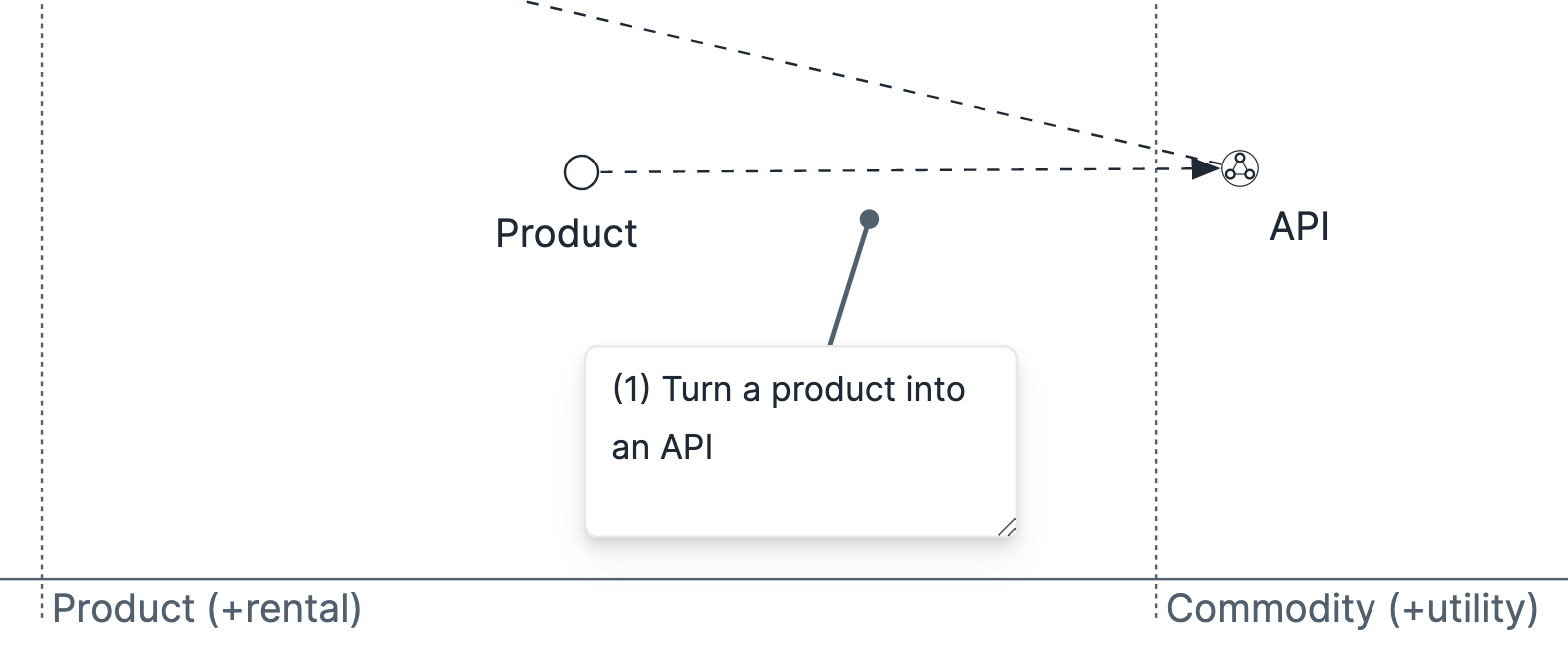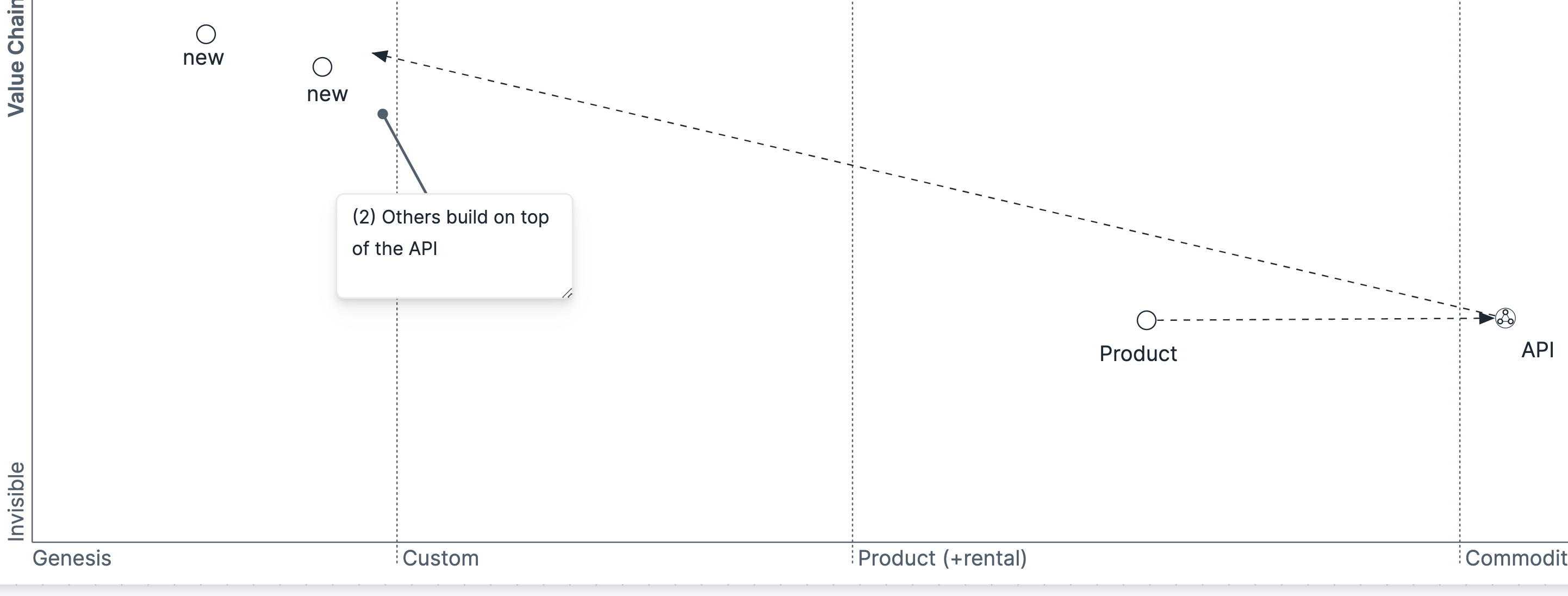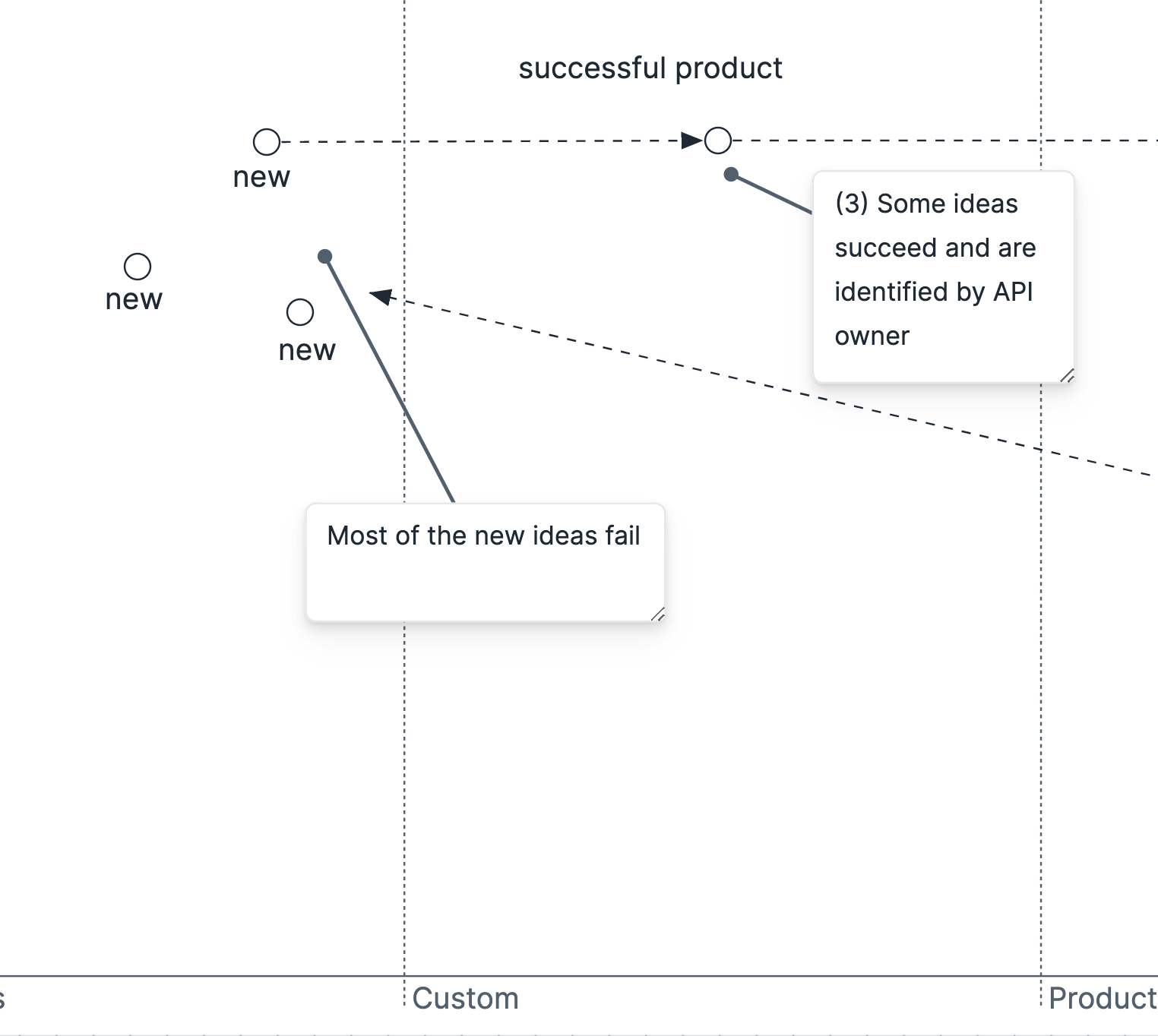OpenAI Taking Over Business Models With GPTs...
...And Other Things You Could See Coming

Tristan Slominski
Nov 10, 2023

Much has been written about OpenAI releasing their new "app store" for GPTs. What surprises me is that this is in any way surprising. From the perspective of Wardley Mapping, it is the most obvious and inevitable thing in the world to happen. It even has a name: Innovate-Leverage-Commoditize.
Innovate, Leverage, Commoditize
The pattern goes as follows.
- A successful product becomes commoditized by being made easily and readily available through an API (Commoditize step).

- If the product is compelling, others will build new things on top of the API (Innovate step).

- At this point, the owner of the API is able to determine through usage which of the new innovative ideas are succeeding. As such, it is able to see a new successful product emerge (Leverage step).

- Once the new successful product is identified, the option to copy it or acquire presents itself.

Later on, the new product becomes part of the API offering (Commoditize step), enabling others to build a new generation of things yet again (Innovate step). This, once again, presents leverage opportunities to the owner of the API.

OpenAI
So, what does the latest OpenAI move to create an app store for GPTs look like?

You may rightfully challenge me that if this was so obvious and inevitable, why didn't I write about this before it happened. For one, the timing of these types of phase transitions is tricky. This was bound to happen eventually. If OpenAI did not do it, someone else would. Maybe they are trying but didn't execute fast enough. However, while the exact timing and details may be challening, the risk for "wrapper" startups was always there, clear as day on any Wardley Map of the AI space.
Other Resources
While this post showed how the Innovate-Leverage-Commoditize pattern frames OpenAI's recent app store creation, this is but a simple small example. If you're interested in the AI space, @mcraddock on X writes a lot about current AI trends through the lens of Wardley Maps.
To learn more about Wardley Mapping, Learn Wardley Mapping is a great resource.
And lastly, the primary source is of course Simon Wardley and his writings: @swardley, the book.
